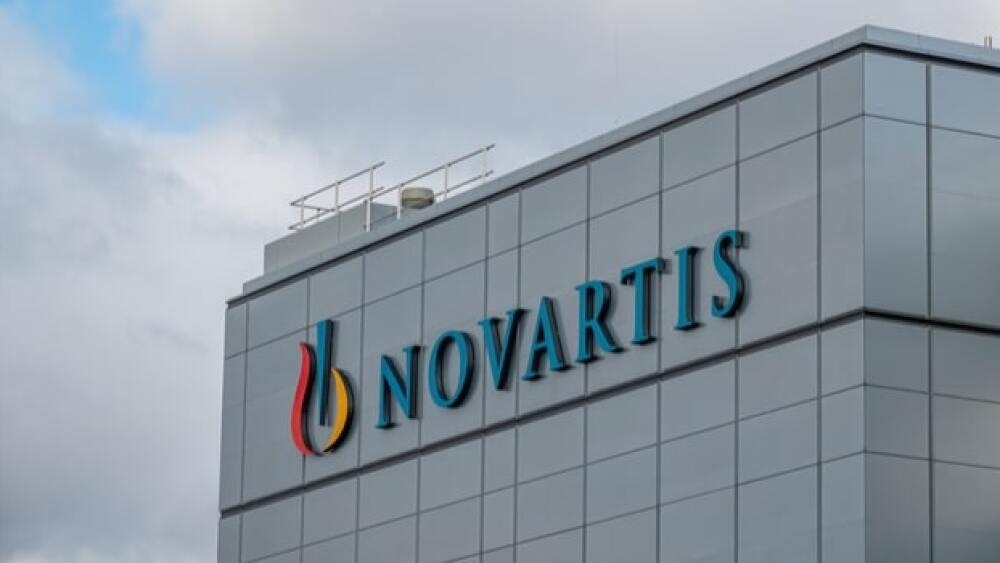Novartis announced the Phase III PSMAfore trial of Pluvicto for PSMA-positive metastatic castration-resistant prostate cancer met its primary endpoint.
Taljat David/Shutterstock
With Novartis facing a potential loss of $9 billion through 2026 from patent expirations, the company announced topline results for Pluvicto for PSMA-positive metastatic castration-resistant prostate cancer (mCRPC).
Pluvicto is already approved in the U.S. and elsewhere for adults with PSMA-positive mCRPC who have already received ARPI and taxane-based chemotherapy. The drug hit $80 million in third-quarter sales, and company CEO Vas Narasimhan has indicated Novartis believes it could eventually hit more than $2 billion in annual sales, but it may take time.
The drug is one of eight core medicines the company believes have the potential for blockbuster status. The others include Cosentyx, Entresto, Zolgensma, Kisqali, Kesimpta, Leqvio and Scemblix.
Pluvicto (lutetium (177Lu) vipivotide tetraxetan) is an intravenous radioligand treatment that combines a targeting compound (ligand) with a radioactive particle, lutetium-177. Once administered, the drug binds to target cells, including prostate cancer cells that express prostate-specific membrane antigen (PSMA). At that point, radiation from the isotope damages the target cells.
The Phase III PSMAfore trial demonstrated a statistically significant and clinically meaningful improvement in radiographic progression-free survival (rPFS) in PSMA-positive mCRPC after receiving androgen-receptor pathway inhibitor (ARPI) therapy, compared to a change in ARPI. The safety profile was consistent with previous studies.
“With the announcement of these positive topline Phase III results, Pluvicto becomes the first PSMA-targeted radioligand therapy to demonstrate significant and clinically meaningful benefits for people living with this type of prostate cancer who have not received taxane-based chemotherapy,” said Shreeram Aradhye, M.D., president, global drug development and CMO, Novartis, in a press release.
The company plans to present the data at an upcoming conference and to discuss regulatory approval with the FDA in 2023.
A Potential Drop in Profits
In the company’s second-quarter conference call, Narasimhan said the company’s mid-stage pipeline was on track for more than 20 potential regulatory approvals by 2026. It was abandoning its programs in asthma and chronic obstructive pulmonary disorder to “streamline the medicine portfolio inner pipeline so that we can focus on the medicines that matter most in our core therapeutic areas,” Narasimhan said in the call.
The company’s core areas are hematology, solid tumors, immunology, neuroscience and cardiovascular.
One of the biggest challenges will be the loss of patent protection for its second-best-selling drug, Entresto, starting in 2025. Entresto’s estimated peak sales for 2025 are projected to be about $6.3 billion.
It will also face generic competition with its eye therapy Lucentis, which it shares with Roche.
Novartis has been working to streamline its operations, which Narasimhan said was “progressing well” in July, with about $1.5 billion in expected savings. “Taken together, these six brands now constitute 32% of innovative medicines sales, and they’re growing at 31%,” he said.
Those six include Entresto, Kesimpta, Kisqali and Zolgensma, Cosentyx and Kymria.
An analysis in September by EvaluatePharma found that while the number of drugs Novartis has launched in the past five years was impressive, its commercial potential wasn’t quite as strong as that seen by other companies, such as Eli Lilly. EvaluatePharma suggests that metric is why Novartis prioritizes its pipeline to “focus on high-value NMEs,” or new molecular entities.
Pluvicto, however, was one of three of Novartis’s recent approvals driving sales, along with the cholesterol drug Leqvio and cancer drug Scemblix.





